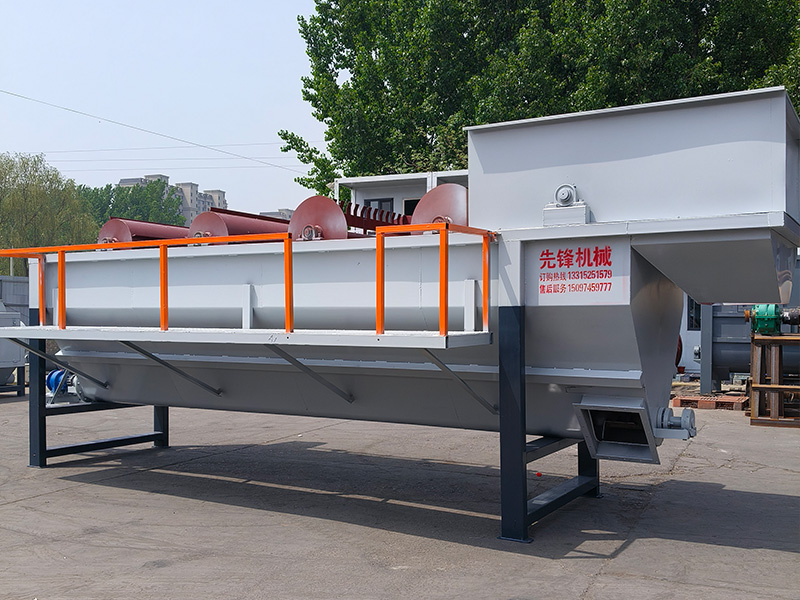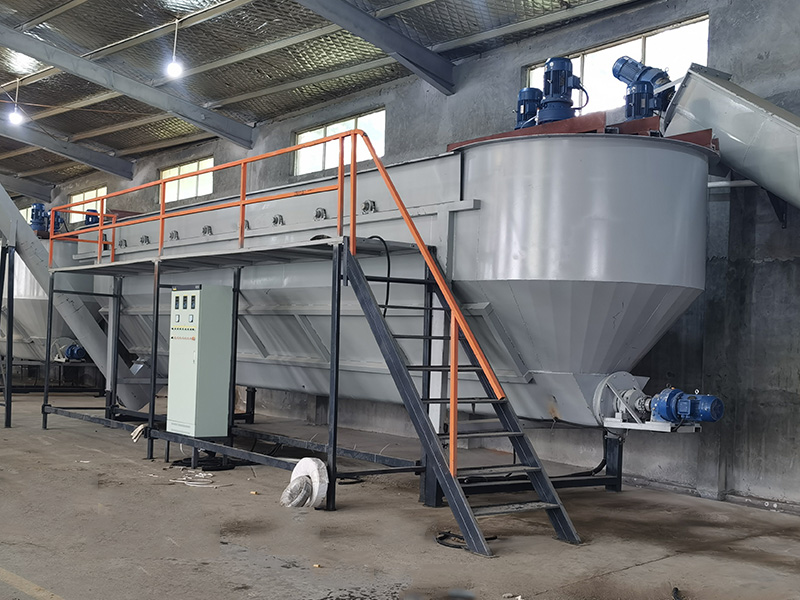How Rinsing Hot Washing Tanks Enhance Efficiency in Sorting Machinery
How Rinsing Hot Washing Tanks Enhance Efficiency in Sorting Machinery
Table of Contents
Introduction: The Importance of Efficiency in Sorting Machinery
Understanding Hot Washing Tanks
What Are Hot Washing Tanks?
Benefits of Hot Washing
The Rinsing Process: Steps to Success
Optimal Conditions for Rinsing
Jul 22,2025

How Rinsing Hot Washing Tanks Enhance Efficiency in Sorting Machinery
Table of Contents
- Introduction: The Importance of Efficiency in Sorting Machinery
- Understanding Hot Washing Tanks
- The Rinsing Process: Steps to Success
- Impact on Sorting Machinery Efficiency
- Best Practices for Rinsing Hot Washing Tanks
- Case Studies: Real-World Applications
- Frequently Asked Questions (FAQs)
- Conclusion: A Cleaner Future for Sorting Machinery
Introduction: The Importance of Efficiency in Sorting Machinery
In the world of manufacturing and processing, **efficiency** is paramount. Sorting machinery plays a crucial role in determining the effectiveness and productivity of manufacturing operations. As industries strive to meet increasing demands while minimizing costs, the importance of maintaining and enhancing the performance of sorting machinery cannot be overstated. One often-overlooked aspect of this process is the **rinsing of hot washing tanks**. This article delves into how this practice can significantly enhance the efficiency of sorting machinery, providing insights and best practices for implementation.
Understanding Hot Washing Tanks
What Are Hot Washing Tanks?
Hot washing tanks are specialized vessels used for cleaning components and materials through the use of heated water and detergents. These tanks are essential in industries where cleanliness directly impacts product quality, such as food processing, pharmaceuticals, and recycling. The combination of heat and agitation enhances the cleaning process, ensuring that contaminants are effectively removed from surfaces.
Benefits of Hot Washing
The hot washing process offers several advantages:
- **Effective dirt and contaminant removal**: The heat and agitation in hot washing tanks enable the removal of tough grime and contaminants that cold washing might leave behind.
- **Reduced cleaning time**: Hot water significantly decreases the amount of time required for cleaning, allowing for quicker turnaround times in production cycles.
- **Enhanced equipment longevity**: By maintaining clean machinery, the wear and tear on components is minimized, leading to longer equipment life and reduced maintenance costs.
The Rinsing Process: Steps to Success
Rinsing hot washing tanks is an essential step that can enhance the overall efficiency of sorting machinery. It ensures that any residual detergents or contaminants are thoroughly removed, preventing potential issues in subsequent processing. Here’s a breakdown of the rinsing process:
Optimal Conditions for Rinsing
To achieve the best results during rinsing, certain conditions should be met:
- **Temperature Control**: Maintaining an optimal temperature during rinsing is crucial. Typically, water temperatures between 50°C and 80°C are ideal, as they effectively remove any residues without risking damage to the equipment.
- **Water Quality**: Using clean, filtered water is essential. Any impurities in the rinse water can contaminate cleaned surfaces, undermining the entire washing process.
- **Rinsing Duration**: The duration of the rinse should be carefully timed. Insufficient rinsing can leave traces of cleaning agents, while over-rinsing can waste water and energy.
Techniques for Effective Rinsing
Implementing specific techniques can enhance the effectiveness of the rinsing process:
- **Counter-Current Rinsing**: This method involves rinsing materials in the opposite direction of the flow of dirty water, ensuring better contaminant removal.
- **Multiple Rinse Stages**: Incorporating multiple rinse stages can further ensure that all residues are thoroughly removed before sorting machinery processing.
- **Automated Rinsing Systems**: Investing in automated rinsing systems can enhance consistency and efficiency, reducing the chance of human error.
Impact on Sorting Machinery Efficiency
The direct correlation between rinsing hot washing tanks and sorting machinery efficiency cannot be underestimated. Clean machinery leads to optimal performance, resulting in:
- **Improved Sorting Accuracy**: With cleaner machinery, the risk of cross-contamination is minimized, leading to more precise sorting outcomes.
- **Reduced Downtime**: Regular rinsing and maintenance prevent machinery from breaking down, significantly reducing downtime and associated costs.
- **Higher Quality End Products**: Clean equipment yields higher quality products, which is critical in maintaining customer satisfaction and market competitiveness.
Best Practices for Rinsing Hot Washing Tanks
To ensure the effectiveness of rinsing hot washing tanks, consider implementing these best practices:
- **Regular Maintenance Schedule**: Develop a routine for inspecting and maintaining washing tanks to enhance their efficiency and longevity.
- **Employee Training**: Ensure that all operators are trained in rinsing procedures and understand the importance of cleanliness in the manufacturing process.
- **Monitoring Systems**: Utilize monitoring systems to track the performance of rinsing operations and make adjustments as necessary.
Case Studies: Real-World Applications
Examining real-world applications can provide valuable insights into the benefits of rinsing hot washing tanks:
- **Case Study 1: Food Processing Plant**
In a food processing facility, implementing a comprehensive rinsing protocol for hot washing tanks resulted in a 30% reduction in product contamination rates. Operators reported increased confidence in the cleanliness of their equipment, leading to improved production efficiency.
- **Case Study 2: Recyclable Material Sorting**
A recycling facility that introduced a multi-stage rinsing process saw a significant enhancement in sorting accuracy. The changes led to a 25% increase in the quality of sorted materials, directly impacting profitability.
Frequently Asked Questions (FAQs)
1. What is the purpose of rinsing hot washing tanks?
Rinsing hot washing tanks removes any remaining detergents or contaminants from the cleaning process, ensuring equipment is clean and ready for sorting operations.
2. How frequently should hot washing tanks be rinsed?
The frequency of rinsing depends on usage, but it is generally recommended to rinse after each cleaning cycle to ensure optimal performance.
3. Can rinsing hot washing tanks improve product quality?
Yes, rinsing significantly reduces the chances of contamination, which directly improves the quality of the final products.
4. What is the ideal temperature for rinsing?
The ideal rinsing temperature typically ranges from 50°C to 80°C to effectively remove residues without damaging the equipment.
5. Are automated rinsing systems worth the investment?
Automated rinsing systems can enhance efficiency, reduce labor costs, and ensure consistency, making them a worthwhile investment for many operations.
Conclusion: A Cleaner Future for Sorting Machinery
In the realm of manufacturing and sorting machinery, efficiency is not just a goal but a necessity. Rinsing hot washing tanks plays a pivotal role in enhancing this efficiency. By implementing effective rinsing techniques, maintaining optimal conditions, and adhering to best practices, manufacturers can ensure cleaner operations, reduced downtime, and improved product quality. As industries continue to evolve, the focus on cleanliness and efficiency will be essential for maintaining competitiveness and meeting the demands of the future. Embracing the practice of rinsing hot washing tanks can lead to transformative benefits that go beyond mere cleanliness, establishing a foundation for sustained operational excellence.
TAG:
Contact Us
E-mail :
Phone/WhatsApp:
Address:
Shunping, Baoding City, Hebei Province








